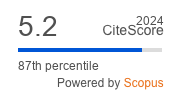Article | Open Access
Debating Employment in National TV News: Depoliticised Discourses and Overlooked EU Policies
| Views: | 1224 | | | Downloads: | 800 |
Abstract: This article examines the framing of employment policies in public debates within European Union (EU) member states. (Mediatised) public debate is not merely a medium for discussing employment policy; it constitutes a normative infrastructure of democracy. Therefore, the way employment policies are framed and discussed (in other words: [de]politicised) in the mediatised public debate informs us about the democratic quality of the political systems we live in. This is particularly true in the European context. EU policies guide and sometimes constrain national employment policies and are strategically used to (de)politicise national debate. The study relies on TV news broadcasts (TNBs) of public broadcasters as a proxy for the public debates. In total, 576 TNBs in France and Belgium are compared in a diachronic perspective (1995–1996; 2005–2006; 2019). Qualitative frame analysis enables to identify how people intervening in the public debate speak about employment policies and whether they frame them as contingent and controversial. Results identify three framings of employment policies through which the EU is discussed in the Belgian and French broadcast public debates: labour market, social rights, and individual factors. In general, results reveal that the EU and its policies are neither blamed nor contested, but are largely overlooked in both countries’ national public debates. When this is not the case, the EU and its policies are mostly depoliticised. The depoliticisation in the media is partly explained by a consensual conception of the economy across time, country, and the political spectrum.
Keywords: employment policies; European Union; framing; media; politicisation
Published:
© Damien Pennetreau. This is an open access article distributed under the terms of the Creative Commons Attribution 4.0 license (http://creativecommons.org/licenses/by/4.0), which permits any use, distribution, and reproduction of the work without further permission provided the original author(s) and source are credited.


